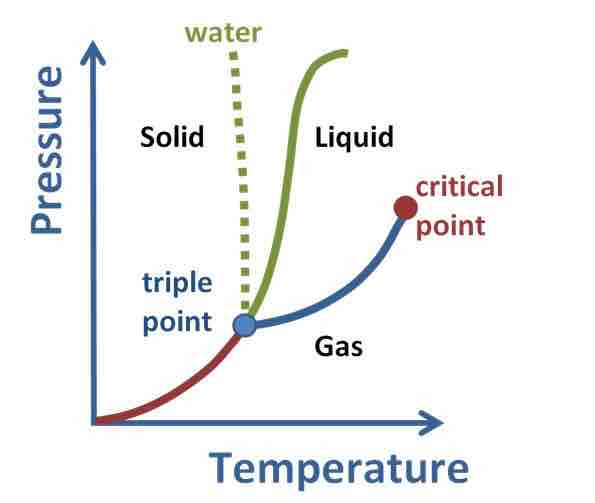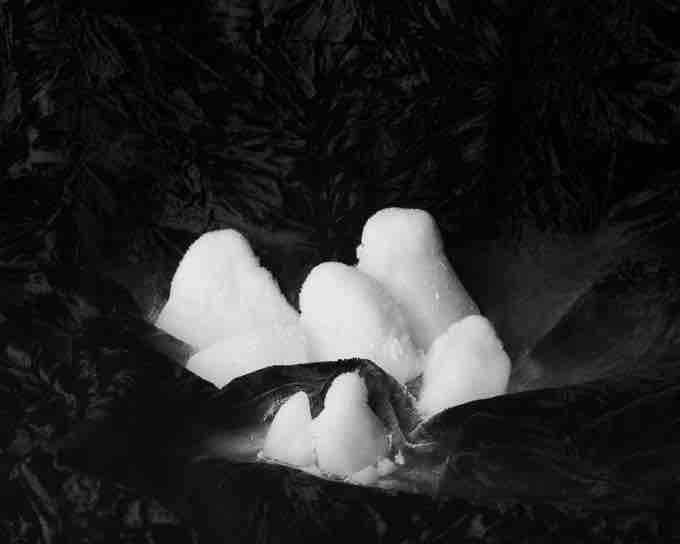Phase Transition: Solid to Gas
Sublimation is the process of transformation directly from the solid phase to the gaseous phase, without passing through an intermediate liquid phase. It is an endothermic phase transition that occurs at temperatures and pressures below a substance's triple point (the temperature and pressure at which all three phases coexist) in its phase diagram.
At a given temperature, most chemical compounds and elements can possess one of the three different states of matter at different pressures. In these cases, the transition from the solid to the gaseous state requires an intermediate liquid state. But at temperatures below that of the triple point, a decrease in pressure will result in a phase transition directly from the solid to the gaseous. Also, at pressures below the triple point pressure, an increase in temperature will result in a solid being converted to gas without passing through the liquid region.

Phase Diagram of a Pure Substance
Notice the triple point of the substance. At temperatures and pressures below those of the triple point, a phase change between the solid and gas phases can take place.
For some substances, such as carbon and arsenic, sublimation is much easier than evaporation. This is because the pressure of their triple point is very high and it is difficult to obtain them as liquids. The solid has such high vapor pressures that heating leads to a substantial amount of direct vaporization even before the melting point is reached.
The process of sublimation requires additional energy and is therefore an endothermic change. The enthalpy of sublimation (also called heat of sublimation) can be calculated as the sum of the enthalpy of fusion and the enthalpy of vaporization.
The reverse process of sublimation is deposition (i.e., gas to solid). For example, solid iodine, I2, is easily sublimed at temperatures around 100°C. Even ice has a measurable vapor pressure near its freezing point, as evidenced by the tendency of snow to evaporate in cold dry weather. There are other solids whose vapor pressure overtakes that of the liquid before melting can occur. Such substances sublime; a common example is solid carbon dioxide (dry ice) at 1 atm of atmospheric pressure.

Dry Ice
Solid carbon dioxide (known as "dry ice") sublimes into the air.